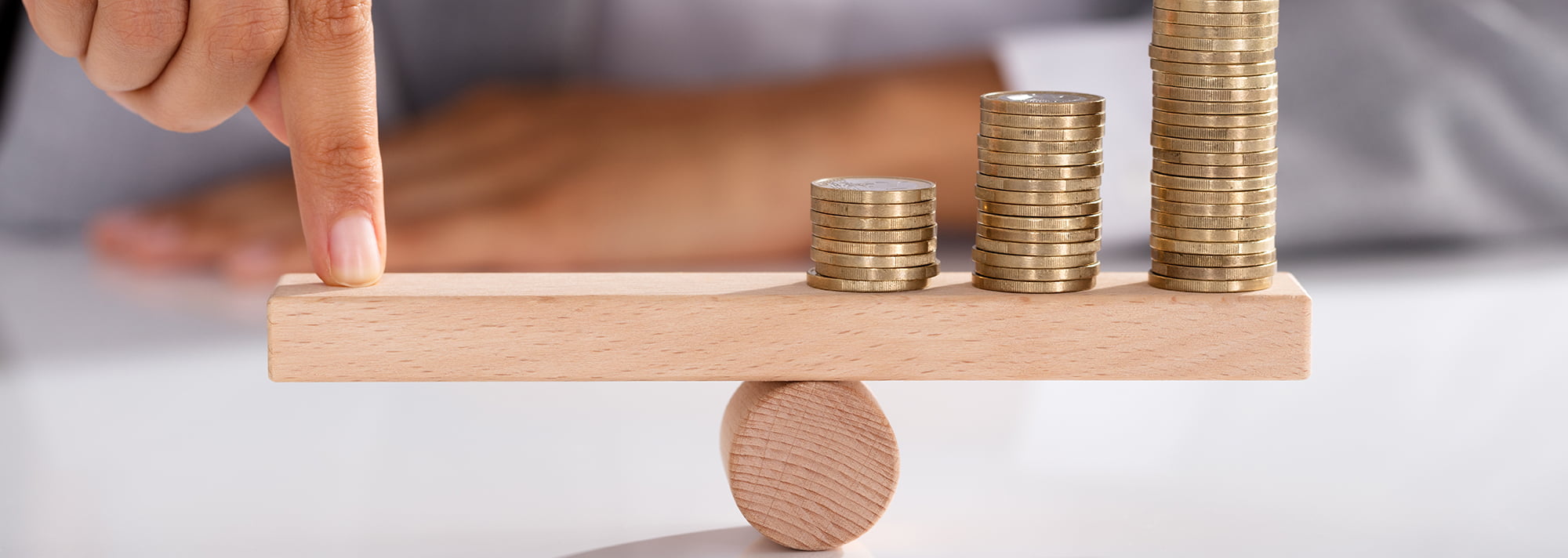
Creating a flexi-budget for 2021
Learning how to budget is the first step on the road to financial security, and later, financial freedom. So if you struggle to stick to a budget, it’s worth trying a different approach. By building more flexibility into your plans, you’ll master your budget in no time.
If 2020 has taught us anything about money, it’s the importance of financial security. With four-in-10 Aussies losing income due to the COVID-19 pandemic, many people have had to draw down on savings, or even reach into their superannuation to get by.
Managing your money in a planned way, starting with a budget, is an essential skill if you want to achieve financial security and the ability to weather unexpected events like COVID-19.
Yet many people struggle to stick to a budget, finding it too rigid. This is where a flexi-budget can come in handy.
Certified Financial Planner® (CFP®) Rachel O’Connor of Flourix Wealth says there any many different methods of budgeting.
“If you’ve tried budgeting in the past and it didn’t work, that doesn’t mean you’re ‘not good at budgeting’ or that you have ‘failed’,” Ms O’Connor says. “It may just mean you need to try something different and experiment a bit.”
The benefit of a flexi-budget
Most of us still think of a budget as a spreadsheet with fixed line items – but it doesn’t have to be so cut and dry.
“Things will always come up in life, and people’s lives and situations change over time,” Ms O’Connor says. “Having some flexibility in your budget allows you to manage unexpected expenses.”
Here’s one way to create your flexi-budget for the coming year.
Start with the essentials
Like any budget, a flexi-budget starts with adding up all of your essential expenses.
Peter Foley CFP® of Thirdview says it’s vital to record your budget in writing. You can use a traditional spreadsheet, or a budgeting app if that works for you. Try the Money Smart budget planner.
“Whether it’s pen to paper or a spreadsheet, putting your numbers down gets them out of your head and in the open,” he says. “You’ll have more head space and you can show these numbers to someone (your spouse or financial planner) who can help you stay on track.”
Tip: Gather together your statements, bills and invoices from the last year or two. Try to find concrete examples of your costs for each different category. Then average these out to come up with an accurate record of what you actually spend. If you don’t have bills to work from, you can estimate, just remember to review your costs against your bills at tax time and make sure your estimates are still accurate.
Read more: Essential apps for budgeting and saving money
Create flexible emergency funds
Once you’ve taken care of the essentials, you can start building some flexibility into your budget by allocating funds to your emergency savings.
Having an emergency fund (or several) will help you cope when anything unexpected arises. As we’ve all seen this year, unexpected costs can arise at any time and often require an immediate response. If you’re not prepared, it can throw your budget into chaos.
Tip: Create several ‘emergency funds’ for different areas of your life. For example, you might create a fund for car and home repairs; one with at least three-months’ worth of living expenses in it; and another one for anything health related. You could even create an ‘emergency fund’ for entertainment, to use whenever an unexpected birthday presents or kids’ schools needs crop up.
Give yourself a choice with the ‘one number’ method
Now that you’ve covered the essentials and your emergency funds, your flexi-budget really starts to come to life.
Calculate what’s leftover – this is your ‘one number’. You can now decide from week to week, or month to month, what you want to allocate the remainder to.
“Your ‘one number’ is the amount of money you have left over for spending each week, fortnight or month,” Ms O’Connor says. “From there, all you need to remember and stick to is the one number. As long as you stick to that one number it can all be spent in any way you like.”
The beauty of this method is the flexibility. Because you’re free to vary how you use the funds from month-to-month, it can feel less onerous and more engaging than traditional budgeting.
Tip: You get to decide how much you’d like to allocate to your goals, like paying off debt or saving and investing for the future. You could even start a holiday fund, have a weekend away or enjoy a splurge if that’s what you decide.
Build in a budget for fun
Our final tip? Include a flexible ‘fun’ budget and reward yourself every now and then.
“One rule I have for my clients is to ensure your budget includes allocations of funding towards something to look forward to in the short and long term,” Mr Foley says. “This way you’ll experience the success (joy) your budget brings rather than feeling like it’s a grind,” he says.
Ms O’Connor agrees.
“It’s important to set yourself mini-milestones and celebrate wins. This will help you stay motivated, stick to the plans you have created and achieve your goals.”
Start the new year right! If you’d like to get your money working harder so you can reach your financial goals sooner, speak to a financial planning professional today.
Money & Life contributors draw on their diverse range of experience to present you with insights and guidance that will help you manage your financial wellbeing, achieve your lifestyle goals and plan for your financial future.
Original Author: Produced by moneyandlife.com.au and published on 11/01/2021 Source


